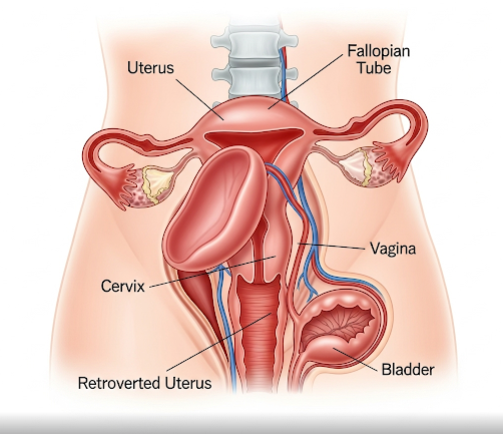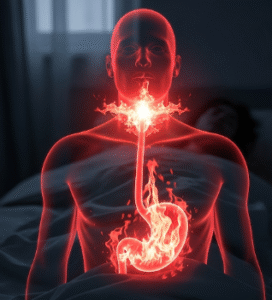Overview
A retroverted uterus, also known as a tipped or tilted uterus, is a common anatomical variation where the uterus tilts backward toward the spine instead of its usual forward position over the bladder. This condition is often harmless and discovered incidentally during a pelvic examination or ultrasound. In Korea, advanced gynecological diagnostics and minimally invasive treatments are available for women who experience symptoms from a retroverted uterus, ensuring personalized care and optimal reproductive health outcomes.
What is a Retroverted Uterus?
In most women, the uterus is anteverted (tilted forward). In a retroverted uterus, the body of the uterus is angled backward toward the rectum. This variation can be congenital (present from birth) or acquired later in life due to conditions like pelvic surgery, childbirth, or pelvic inflammatory disease. While it usually causes no problems, in some cases it may lead to discomfort, painful intercourse, or fertility challenges.
Symptoms
Many women have no symptoms, but when present, they may include:
- Pelvic pain or pressure
- Painful menstruation (dysmenorrhea)
- Pain during sexual intercourse (dyspareunia)
- Lower back pain during menstruation
- Difficulty inserting tampons
- Urinary frequency or urgency in some cases
- Fertility difficulties (rare)
Causes
- Congenital anatomical variation
- Pelvic inflammatory disease (PID)
- Endometriosis causing uterine adhesions
- Uterine fibroids pulling the uterus backward
- Pelvic surgery scars
- Postpartum changes after childbirth
Risk Factors
- Family history of retroverted uterus
- Chronic pelvic infections
- Endometriosis
- Multiple pelvic surgeries
- Advanced age with pelvic tissue weakening
Complications
- Pain during intercourse
- Menstrual discomfort
- Increased risk of urinary issues
- Rare fertility problems (usually linked to underlying conditions like endometriosis or adhesions)
Prevention
Since many cases are congenital, prevention isn’t always possible, but the risk of acquired retroversion can be reduced by:
- Treating pelvic infections promptly
- Managing endometriosis early
- Regular gynecological check-ups
- Avoiding unnecessary pelvic surgery
Treatment Options in Korea
Korean gynecology clinics and hospitals provide comprehensive care for retroverted uterus cases, from diagnosis to management:
- Diagnosis:
- Pelvic examination
- Transvaginal or abdominal ultrasound
- MRI (if associated with other pelvic disorders)
- Conservative Management:
- Most asymptomatic cases require no treatment.
- Pelvic floor exercises and posture adjustments to alleviate mild discomfort.
- Medical Management:
- Pain relief for menstrual or sexual discomfort.
- Hormonal therapy if linked to endometriosis.
- Surgical Options:
- Laparoscopic uterine suspension to reposition the uterus.
- Adhesiolysis to remove scar tissue if retroversion is due to adhesions.
- Fertility Support:
- Assisted reproductive techniques if retroversion is associated with infertility from underlying causes.
With Korea’s expertise in minimally invasive gynecologic surgery and reproductive medicine, women with symptomatic retroverted uterus can achieve relief and improved quality of life.













